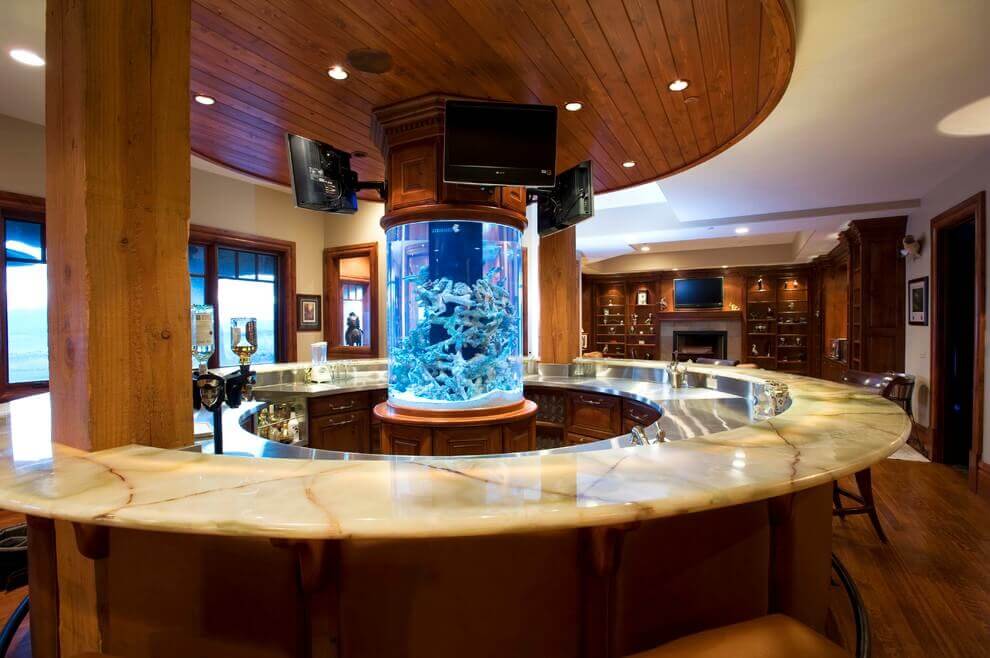
The Simple Trade Secrets For Sublime Home Aquariums
Ever wondered why it is that some folks’ tropical aquariums are pure Heaven to look at while others never fail to look like full-blown disaster zones? Hard work and effort of course plays a role in aquarium care, but according to the experts at Reef Perfect so too do a few trade secrets.
While much of setting up and looking after an aquarium properly comes down to little more than common sense, there are also certain less-obvious bits and pieces that you just have to ‘know’ in order for things to go smoothly for the long-term. From cutting tank cleaning to keeping fish as healthy as possible and encouraging a long and happy life for all involved, you’d be surprised how far a few trade secrets might take you.
Size Matters
For example, it’s often said that beginners should start off with the smallest tank possible just to see how things go. This is a bad idea for two reasons – the first of which being that the smaller the tank, the faster the water quality deteriorates. In addition, cramped spaces simply aren’t good for fish at the best of times and nor are the temperature changes the water in smaller bowls can be exposed to. You don’t have to go massive, but size does indeed matter.
Washed Out
When the time comes to clean your tank…or any part thereof…never fall into the trap of using fresh, clean tap water for washing filter sponges, ornaments or really anything else at all. Tap water is full of chemical elements that can wipe out fish in a heartbeat, so be sure to only ever rinse them using the tank’s own water or pre-treated water.
Step by Step
If a fish tank is well cared for, it need never be emptied and scrubbed out in full. Instead, invest in an affordable gravel cleaner that can be used to extract around 25% of the water at a time, in order for the tank to then be topped up with newly treated water. Carefully monitor any build-ups of dirt or algae and save yourself the hell of going about a full cleaning job – it could be deadly for your fish.
Greedy Guts
Just because your fish seem to be eating like pigs or have a hungry ‘look’ to them doesn’t mean they actually need any more food. Quite to the contrary, fish have an unfortunate habit of quite literally eating themselves to death, so don’t ever think you’re doing them any favours by ‘treating’ them to a little bit extra.
Be Picky
When the time comes to buy more fish for the tank, take a very close look at the specimens on offer for any signs of disease or injury. If any of the fish in the tank you’re looking at look anything less than 100% healthy, there’s a good chance every fish in the tank could be ill. And if the fish you buy is sick, it won’t be long until the rest of your fish suffer the same malaise. Be as picky as necessary to ensure you only ever take home the healthiest specimens.
One by One
Even if you have a tank that’s as big as a small car, this doesn’t mean it’s a good idea to dump a ton of fish in there all at the same time. With each fish that enters the tank, strain is put on the water and various bacteria and enzymes need to build, balance and level off. So the more fish you put in at the same time, the bigger the strain on the water and the higher the chance of it harming all fish within the tank. Even if the fish of your dreams are on special offer, be sure to add them very slowly and in small numbers.
Measuring Up
There’s a general rule of thumb that states you should be looking to put no more than 1 inch of fish for every gallon of water the tank holds. However, this cannot be taken too literally as it would for obvious reasons not be a good idea to use a 10-gallon tank to house a 10-inch fish. Common sense comes into play on this one – always err on the side of caution.
Isolation
And finally, if taking your aquarium seriously or in possession of a large and varied collection of fish, it’s always worth investing in a second, smaller isolation tank to be used for the quarantining of any new fish prior to being added, or for the immediate removal of any fish you fear pose a health threat to the others in the tank.